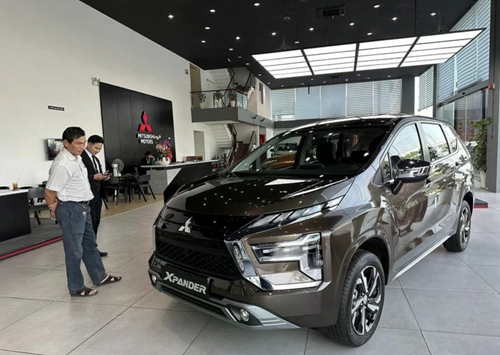Passenger vehicles led the charge with 22,339 units sold, surging 53% from February. Commercial vehicles followed with 9,231 units, up 36%, while sales of special-purpose vehicles dipped 36%, totaling 180 units.
    |
 |
|
Members of the Vietnam Automobile Manufacturers’ Association (VAMA) report robust sales of 31,750 units in March |
One standout trend was the sharp rise in completely built-up (CBU) imports, which saw sales climb 60% to 16,863 units. Meanwhile, domestically assembled vehicles also posted a gain of 35%, with 14,887 units delivered to customers.
VAMA’s internal figures showed March sales of 26,079 vehicles, including 18,075 passenger cars, 7,008 commercial vehicles, 94 special-purpose vehicles, and 902 hybrids. Notably, hybrid models experienced an 80% year-on-year jump and rose 40% compared to February, signaling rising interest in fuel-efficient technologies.
Cumulatively in Q1 2025, VAMA members sold 72,249 vehicles, representing a 24% increase over the same period last year. Sales of passenger cars rose 22%, commercial vehicles 28%, and special-purpose vehicles more than doubled with a 104% increase.
Consumer trends also showed a noticeable shift, with CBU imports up 36% and locally assembled cars rising by 13% compared to Q1 2024. This indicates robust demand across diverse vehicle origins and intensifying competition between international and domestic brands.
Toyota maintained its market leadership with 5,370 units sold in March, followed by Mitsubishi (4,412), Ford (4,272), and THACO KIA (2,322). The best-selling models included the Mitsubishi Xpander (3,334 units), Ford Ranger (3,039), and Toyota Vios (2,285).
Industry experts believe that with a clear recovery trend and ongoing consumer support policies from automakers, Vietnam’s auto market is poised for continued growth in the coming quarters of the year.
Rising demand for personal vehicles, particularly in major urban areas, combined with an accelerating shift towards fuel-efficient, hybrid, and electric vehicles, is expected to further diversify the market and boost consumer spending.
If the current momentum continues and macroeconomic stability holds, Vietnam’s total auto sales in 2025 could rise by 10–15% compared to 2024.
Source: VNA